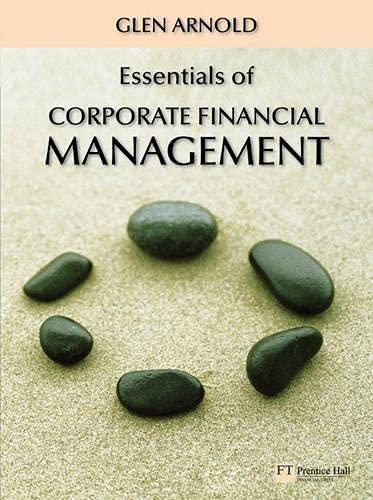(d) Show that the beta of a portfolio (p) is a linear combination of individual asset betas. Section B This section is made up two questions. Choose one of the two questions Question 3 (a) The APT can be summed up in two equations: [40 Marks] r4=aj+j=1KbjFj+2andE(rij)=0+j=1Kbjj (i) How do you interpret be and j ? [4] (ii) What is the difference between by and j ? [3] (iii) Explain, in detail, how the APT can be implemented. [12] (b) Critically discuss 3 main differences between the arbitrage pricing theory (APT) model and the CAPM modeL. State 3 reasons why you may prefer to use the APT rather than the CAPM model. [15] (c) Briefly discuss two main differences between the CAPM model and the consumption CAPM model. [6] 3 Question 4 [40 Marks] (a) Mannery and Ran pan (2006), Haw and Pecters (2006), amony others, coatributed to the In enitientaits 161 (i) Use First Order Stochastic Dominance (FOSD) and Second Order Stochastic Dominance (SOSD) to rank the alternatives A,B and C. That is, which of the three altematives is the most desinble and which one is least desinble? (ii) Which condition or criterion, the FOSD or the SOSD, would you use if the [6] cumalative distribution function (CDFs) were intersecting? Explain your answer. [3] (iii) Assuming a utility function given by: U(W)=W, rank the altematives A,B and C tsing the expected utility theory. [4] Section B This section is made up two questions. Choose one of the two questions Question 3 (a) Derive the capital asset pricing model (CAPM) equation in its ex-ante form. [40 Marks] (b) What happens to the CAPM equation and/or the capital market line if the following CAPM assumptions were violated as follows: [6] (i) Borrowing and lending rates are no longer the same [16] (ii) Transaction costs are no longer zero. (iii) Taxes (corporate and pernonal) are po lenger zero. (iv) Individuals no longer have homogeneous expectations concerning risk and return an assumed in the standard CAPM. (c) Bhefly dictus three nais weaknesiss of the CAPM model. [8] (d) Brielly disctus bow to empirically test the arbitrage pricing theory (APT) model. [10] (i) If CAPM corretly describes the data one is usiag are the results confirming your expectations conceining CAPM? Explain your answer. (4) as weakneses of the CAPM model. Hew would you modify the ahove expressionimodel if you wanted to tes for linainity and the ponsibility of several factors"? (ii) Some inveton hive argued that thoy would choose APT over CAPMC. What are some of ise reason offered in the literahere for this? Flease refer no Vau Remburg (1997). and Mrrtilainen and Yb-Coli (1990) for thik. Sectien th: Choose fro qurutiens Question I in Mrobibitities. (co) (4)









